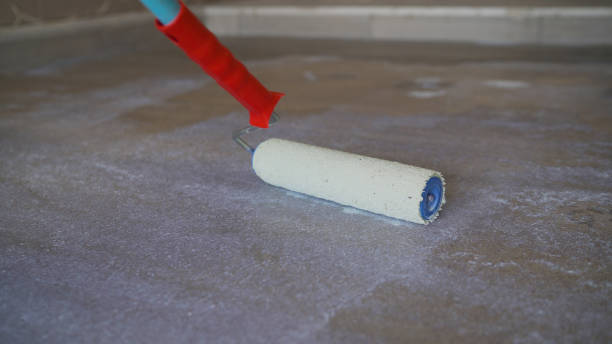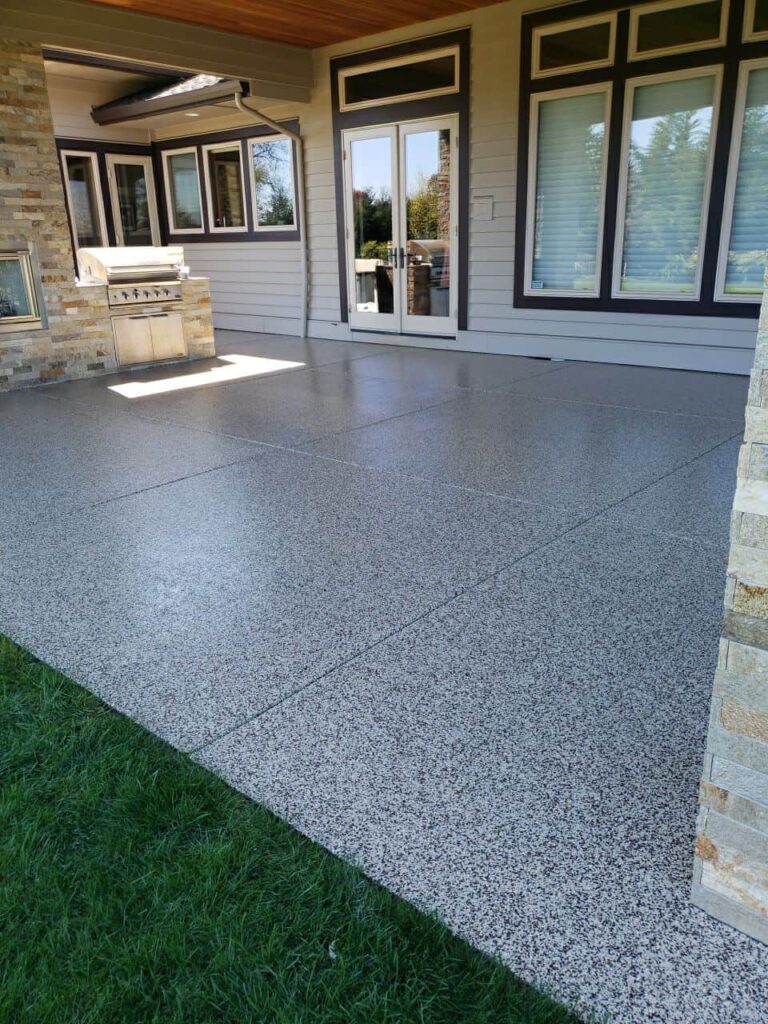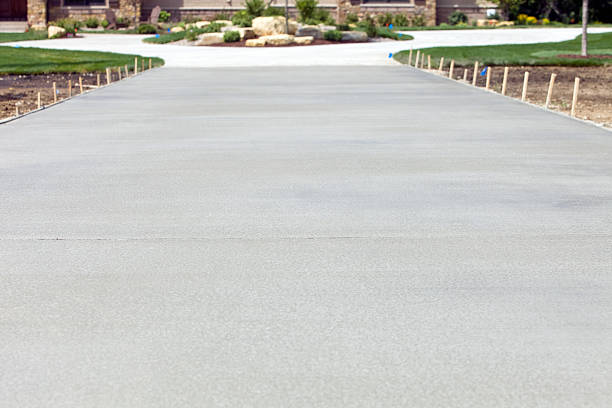Curing and Sealing
- Home
- /
- Curing and Sealing
Transform Your Property with a Deep Clean — Get a Free Quote!

Curing and Sealing
When working with materials like bricks, concrete, tiles, and stones, the difference between curing and sealing is crucial to ensuring long-lasting durability and aesthetic appeal. Curing is the process of maintaining moisture in newly concrete, masonry, cement, terrazzo, and mortar surfaces to allow it to fully harden and develop its strength. Without proper curing, these materials can crack, weaken, or fail to achieve their optimal durability. Curing is essential for surfaces, as it ensures the proper chemical reactions occur, creating a solid foundation that can withstand stress and weathering over time.
On the other hand, sealing involves applying a protective layer to the surface of materials like concrete, masonry, cement, terrazzo, bricks, tiles, stone, and mortar surfaces after they have fully cured. Sealants help to repel moisture, prevent staining, and reduce the wear caused by environmental factors such as UV rays, dirt, and chemicals. For example, sealing concrete or tiles can prevent water from penetrating, which could cause cracks or mold growth. In the case of natural stones like granite or marble, sealing helps preserve their shine and prevents damage from spills or stains. While curing sets the foundation for strength, sealing ensures that the surface remains resistant to daily wear and external elements. Both processes are critical, but while curing builds strength, sealing maintains the material’s appearance and structural integrity over time.
Curing

Curing is an essential process that primarily affects the strength and longevity of materials like bricks, concrete, tiles, and stone when they are freshly installed or poured. It involves maintaining adequate moisture levels within the material for a specified period to promote proper hydration and allow the chemical reactions within these materials to occur.
Curing is especially critical in concrete because the process of cement hydration, which gives the concrete its strength, requires moisture. When concrete is poured, it begins to harden as water reacts with the cement particles. If the surface dries out too quickly, it prevents the cement from fully bonding, leading to a weaker structure. Curing techniques for concrete, include covering the surface with wet burlap, or plastic sheets, or applying curing compounds to retain moisture, which prevents cracking and enhances its compressive strength.
For bricks and masonry, curing is also important, but the approach is a bit different. When bricks are fired in a kiln, they undergo a hardening process similar to concrete, but they still require time to cure properly when used in construction. Curing in masonry involves keeping the mortar joints hydrated so that the chemical bonding of the mortar continues to develop. This is usually done by moistening the joints and ensuring that the bricks don’t dry out too quickly, which could compromise the strength of the bond.
In tiles and stone installations, curing typically refers to the setting of the adhesive or mortar used to bond the tiles to a surface. For example, when ceramic tiles or stone tiles are installed, the adhesive or thin-set mortar needs to cure properly to ensure a strong bond. It’s important to allow sufficient time for the mortar to fully cure before subjecting the tiles to stress or heavy use.
For natural stone, such as granite or marble, the curing process isn’t as crucial as it is for concrete or masonry, but proper handling and drying of the stone are necessary to avoid warping or cracking. Stone typically cures over time as it hardens, but it is generally more durable when cut, polished, or treated correctly before installation.
The overall goal of curing across all of these materials is to ensure that they reach their maximum strength, stability, and resistance to wear. Curing is a time-sensitive process that should not be rushed, as any disruption to the process can lead to compromised durability, resulting in cracking, shrinkage, or general weakness. By maintaining optimal moisture levels, curing maximizes the lifespan of these materials and enhances their ability to withstand the rigors of daily use, weather exposure, and environmental conditions.
Sealing
Sealing materials like concrete, masonry, cement, terrazzo, bricks, tiles, stone, and mortar is an essential step in preserving their appearance, enhancing their longevity, and improving their resistance to various environmental factors. The sealing process involves applying a protective coating that forms a barrier on the surface of the material, which helps guard against water penetration, staining, and wear.
Bricks are porous by nature, making them highly susceptible to absorbing moisture, dirt, and pollutants, which can cause staining or deterioration over time. Sealing bricks helps to prevent water from soaking into the material, reducing the chances of efflorescence (white salt deposits) and mold growth, both of which can degrade their appearance and structure. Additionally, sealing preserves the color of the brick and keeps it looking fresh, while also making it easier to clean, as dirt and grime won’t seep into the porous surface.
Concrete also benefits significantly from sealing. Unsealed concrete can absorb water, which can lead to cracks from freeze-thaw cycles, surface erosion, and even rusting of reinforcements. Sealing concrete protects against moisture penetration, oil stains, and dirt buildup. It also provides a level of protection against harmful chemicals, which can be especially important for outdoor patios, driveways, or industrial flooring exposed to oils, chemicals, and de-icing salts. Depending on the sealant, it can enhance the color of the concrete, giving it a glossy finish or a natural matte look.
Tiles, particularly porous ones like terracotta or unglazed ceramic, require sealing to maintain their finish and prevent staining. Grout, which is commonly used to fill the spaces between tiles, is also highly porous and prone to discoloration. A good sealant can protect the grout lines from dirt, mold, and mildew growth, ensuring that the tile surface remains clean and vibrant. Sealing tiles is especially useful in high-moisture areas like bathrooms and kitchens, where water can seep into the tiles and grout, leading to structural issues or mold.
For stones like marble, granite, slate, and limestone, sealing is a critical part of maintaining their luxurious look and protecting them from environmental elements. These stones are naturally porous and can easily absorb liquids, which may cause discoloration or even permanent stains. For example, acidic substances like wine, citrus, or cleaning agents can etch into the stone and damage its surface. Sealing creates a protective layer that prevents moisture and liquids from seeping in and damaging the stone’s integrity. Additionally, it helps to preserve the natural color and texture of the stone, enhancing its visual appeal over time. Sealing also makes cleaning easier, as spills and dirt can be wiped away more easily, preventing long-term staining.
Overall, sealing enhances the durability, appearance, and ease of maintenance of materials like bricks, concrete, tiles, and stones. By investing in a good quality sealant and maintaining the protective layer, you can extend the lifespan of these materials and keep them looking pristine for years to come.


PDN Power Wash Pros specialize in the critical processes of concrete curing and sealing, essential for ensuring the longevity and durability of your structures. Our experienced team employs industry-leading techniques to maintain optimal moisture during curing, preventing premature drying that can lead to cracks and compromised strength. Post-curing, we apply high-quality sealants that protect against moisture intrusion, stains, and environmental wear, enhancing the surface's resilience and appearance. By integrating these meticulous practices, we deliver construction solutions that stand the test of time, reflecting our commitment to quality, transparency, and client satisfaction.
- Foundation for Strength: Maintaining moisture in freshly poured concrete, mortar, or adhesives (used for bricks, tiles, and stones) enables proper hydration and chemical reactions, which build structural integrity.
- Prevents Damage: Proper curing avoids rapid drying that can lead to cracking, shrinkage, or weakened bonds.
- Surface Protection: Once cured, applying a sealant creates a barrier against moisture, stains, UV rays, and chemicals, preserving both appearance and durability.
- Aesthetic Enhancement: Sealants maintain and even enhance the natural color and texture of bricks, concrete, and stone, ensuring a lasting, polished finish.
- Reduced Maintenance: Sealed surfaces are easier to clean and less prone to damage, helping to extend the lifespan of the material
Commonly Asked Questions
Are you licensed and insured?
Yes, we are fully licensed and insured, ensuring that your project is protected and complies with all local regulations.
Do you offer free estimates?
Yes, we offer free consultations and estimates to help you understand your project’s costs before you commit.
How long will my project take?
The timeline depends on the project's size and complexity. We provide a detailed schedule during the planning phase to keep you informed.

